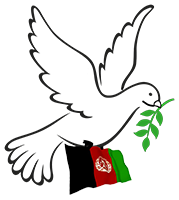Trump, speaking to reporters on Thursday during a trip to London, said “we want that base back” and cited what he called its strategic location near China.
U.S. President Donald Trump’s goal of re-occupying Bagram air base in Afghanistan might end up looking like a re-invasion of the country, requiring more than 10,000 troops as well as deployment of advanced air defenses, current and former U.S. officials say. (Reuters)
Trump, speaking to reporters on Thursday during a trip to London, said “we want that base back” and cited what he called its strategic location near China.
“It’s an hour away from where China makes its nuclear weapons,” Trump said.
The sprawling airfield was the main base for American forces in Afghanistan during the two decades of war that followed the September 11, 2001, attacks in New York and Washington by al Qaeda.
Trump, who has previously said he wants the United States to acquire territories and sites ranging from the Panama Canal to Greenland, has appeared focused on Bagram for years.
He hinted on Thursday that the U.S. could acquire the base with some kind of Islamic Emirate consent, but it was unclear what form such an agreement might take. It would be a remarkable turnaround for the Islamic Emirate, which fought to expel U.S. troops and retake the country from a U.S.-backed government.
A U.S. official, speaking on condition of anonymity, said there was no active planning to militarily take over Bagram air base, which the U.S. abandoned along with the rest of the country when it withdrew from Afghanistan in 2021.
The official said any effort to reclaim the base would be a significant undertaking.
The official said it would require tens of thousands of troops to take and hold Bagram air base, an expensive effort to repair the base, and a logistical headache to resupply the base — which would be an isolated U.S. enclave in a landlocked country.
Even after the U.S. military took control of the base, it would require a huge undertaking to clear and hold the massive perimeter around it to avoid the area from being used to launch rocket attacks against American forces inside.
“I don’t see how this can realistically happen,” the official said.
Experts say the sprawling air base would be difficult to secure initially and require massive manpower to operate and protect.
Even if the Islamic Emirate accepted the U.S. re-occupation of Bagram following negotiations, it would need to be defended from a host of threats including Islamic State and al Qaeda militants inside Afghanistan.
It could also be vulnerable to an advanced missile threat from Iran, which attacked a major U.S. air base in Qatar in June after the United States struck Iranian nuclear sites.
A former senior U.S. defense official played down the benefits of retaking the base, including the base’s proximity to China that was touted by Trump.
“I don’t think there’s a particular military advantage to being up there,” the former official said. “The risks sort of outweigh the advantages.”
In February, Trump complained that Biden had given up the base and said there had been a plan to keep a small U.S. force there, even though his February 2020 accord with the Taliban required a pullout of all U.S.-led international forces.
Trump’s comments came as the Pentagon is carrying out a review into the United States’ chaotic withdrawal from Afghanistan in 2021, which many policy leaders in his administration viewed as a distraction from bigger challenges facing the United States — like competition from China.
Meanwhile, The Second Political Director of the Ministry of Foreign Affairs, in response to U.S. President Donald Trump’s intention to retake the Bagram airbase, stated that a military presence has never been accepted by Afghans throughout history. He emphasized that this possibility was completely rejected during the Doha talks and agreement.
Zakir Jalali wrote on his X page that Afghanistan and the United States need to engage with one another and can establish economic and political relations based on mutual respect and shared interests “without the United States maintaining any military presence in any part of Afghanistan.”
 Afghanistan Peace Campaign
Afghanistan Peace Campaign